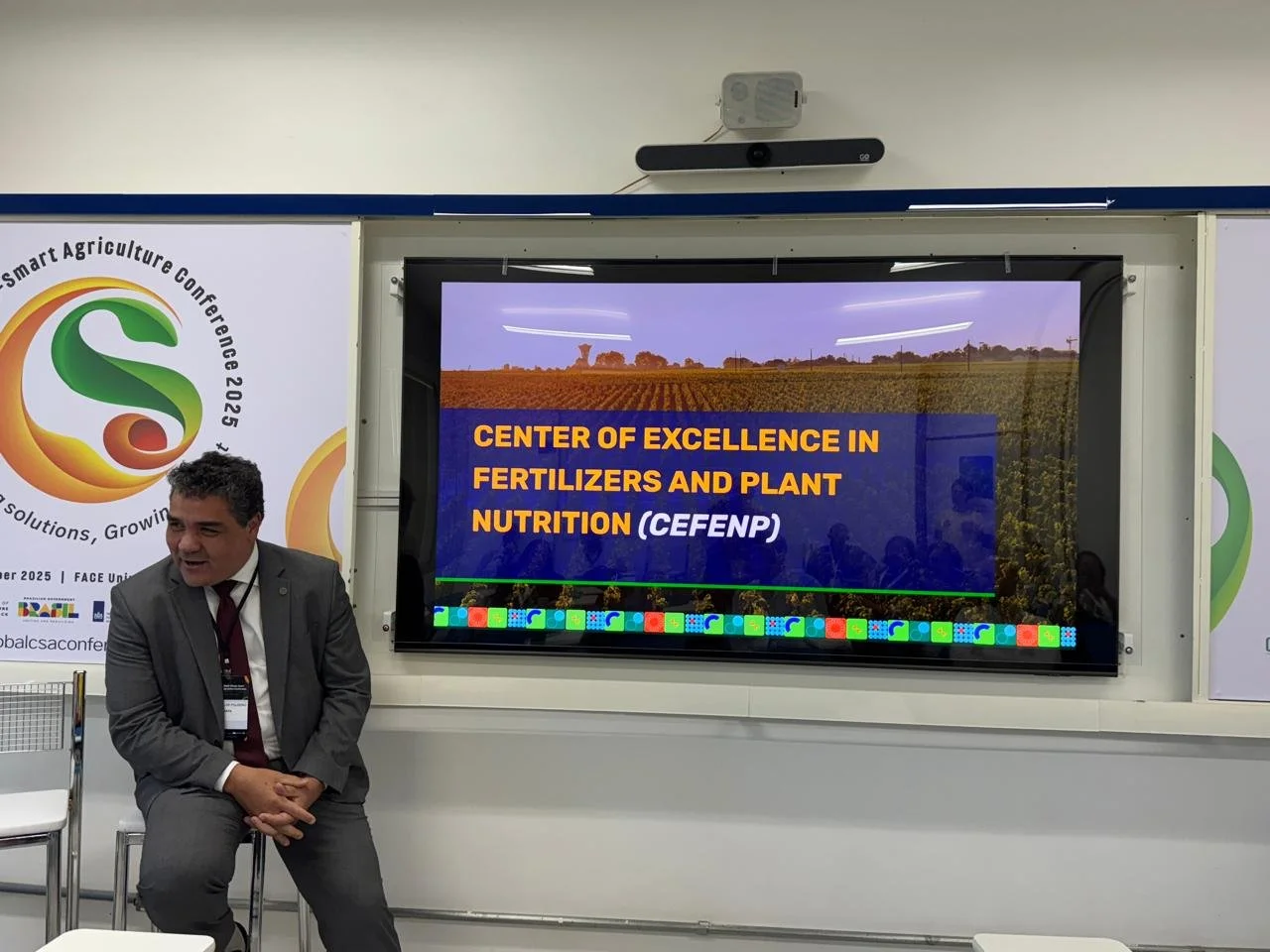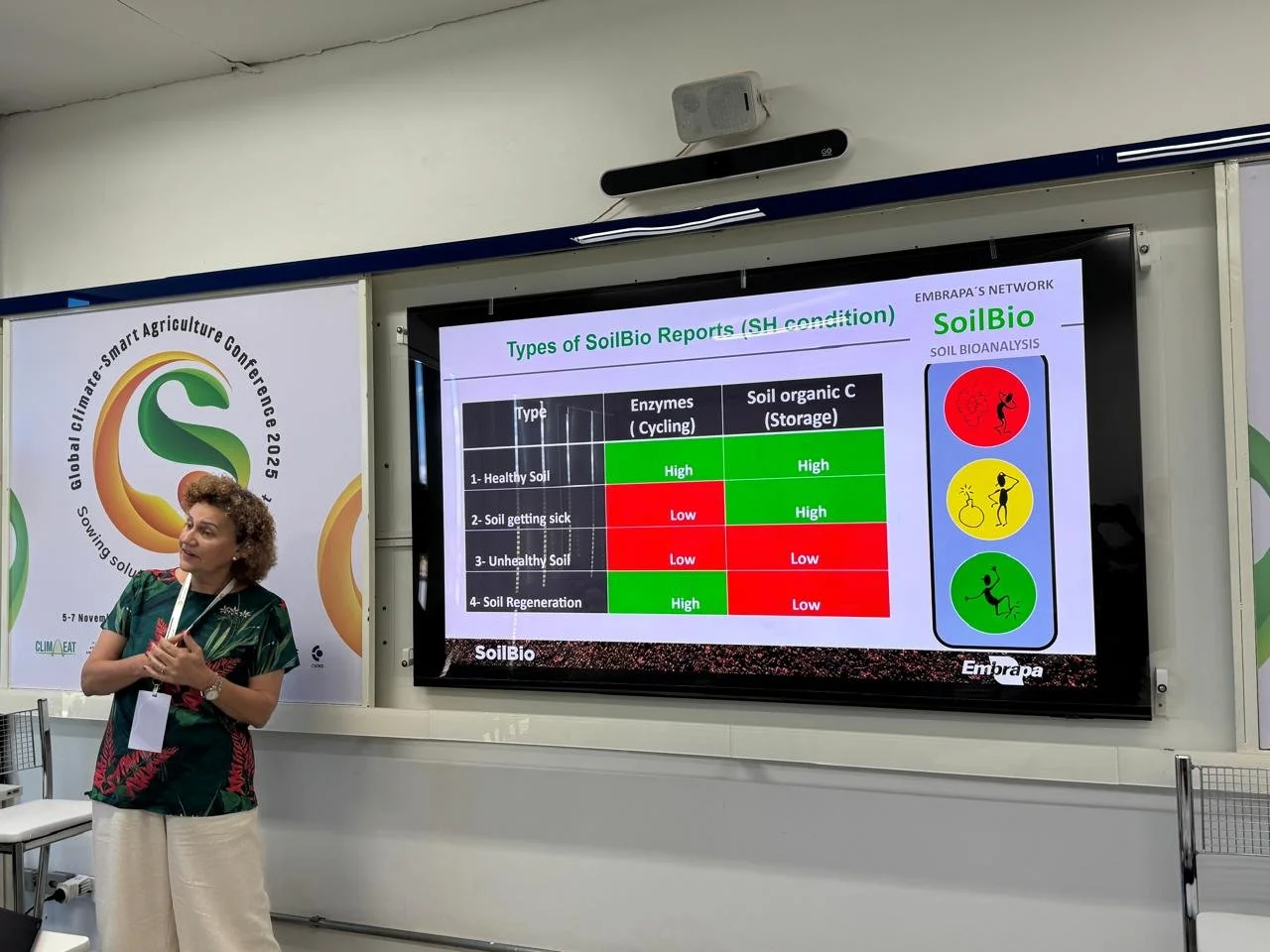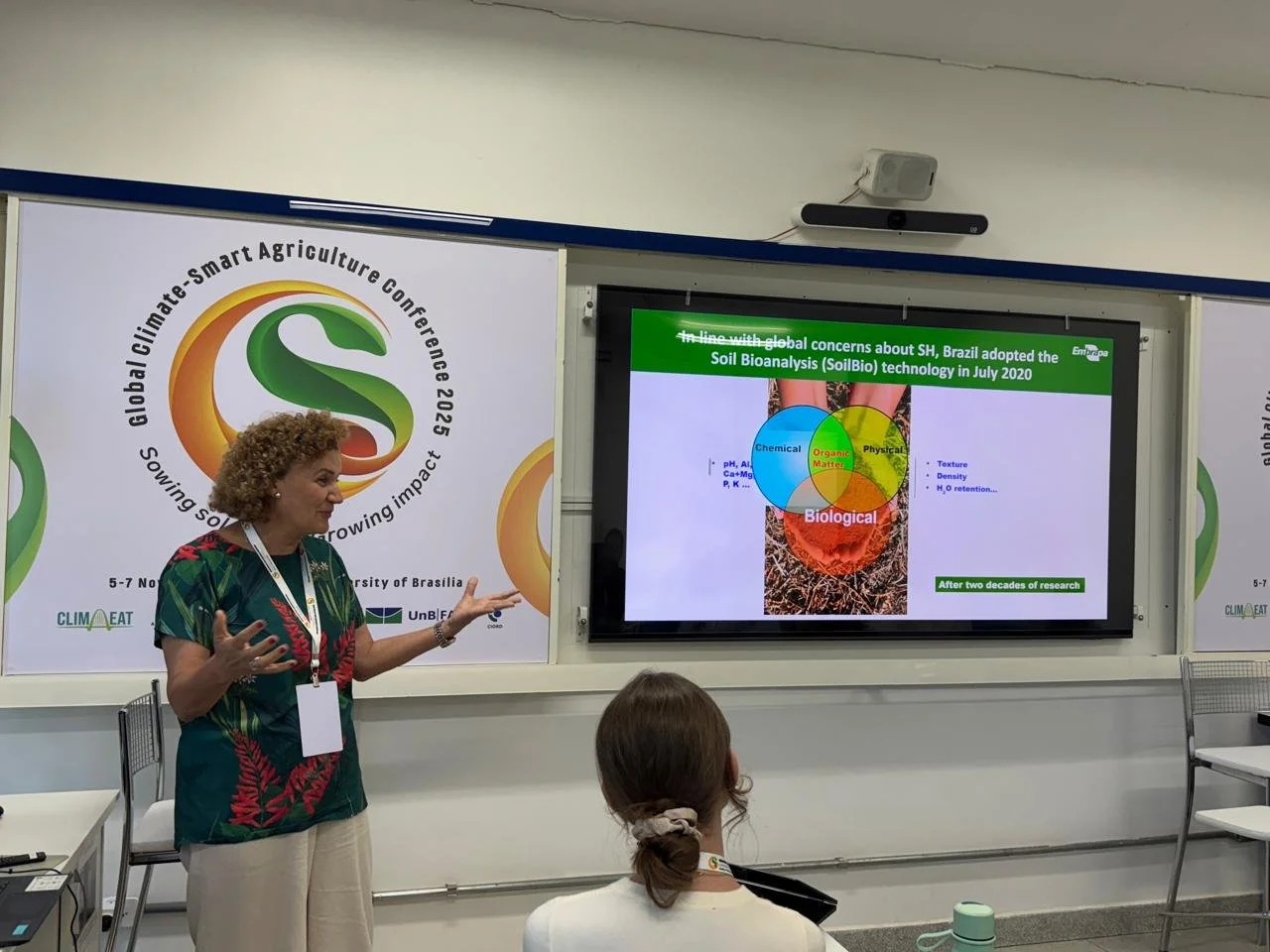Climate-Smart Agriculture from the Soil Up: The Global CSA Conference
The Global Climate-Smart Agriculture (CSA) Conference is more than a knowledge exchange platform; it is a platform to incite climate action in agriculture. Immediately preceding the UN Climate Conference (UNFCCC COP30) taking place in Belem, Brazil, organizers of the 2025 CSA conference saw this year’s assembly as a critical opportunity to align on the future of food and agriculture ahead of COP30.
The conference was held between 5 and 7 November 2025 in Brasilia, Brazil, bringing together scientists, policymakers, investors, and businesses to align on strategic actions that will meaningfully contribute to the COP30 agenda. Organized under six thematic sessions, the conference collated innovations and cross-cutting solutions that will enhance and uphold action on the ground.
Soil health is a fundamental part of climate-smart agriculture. It is the foundation of food systems and the largest terrestrial carbon sink, yet over ⅓ of the Earth’s surface is degraded, in large part due to unsustainable agricultural practices. This seriously undermines the livelihoods and food security of billions of people worldwide. Scaling global soil health is an imperative climate solution that can shift agriculture from being the problem to being a driving force of climate resilience.
As an organization with action as a primary tenet, the Coalition of Action 4 Soil Health (CA4SH) was invited to co-chair the Soil Health and Plant Nutrition thematic session with partners from the International Fertilizer Development Center (IFDC). The session comprised two sub-sessions on 5th and 6th November, dedicated to finance and technology, respectively. Below, we summarize the innovations and key messages shared in these sessions, and chart a way forward for soil health at COP.
Incentivising Practices to Boost Soil Organic Carbon
Soil health is underrepresented in the global climate agenda, yet investing in soil health is a critical climate solution. The return on investing in reversing soil and land degradation makes economic, social and moral sense due to its combined potential to return on livelihoods, the environment, and finance in tandem. The Bonn Challenge aims to bring 150 million hectares of land under restoration, which has the potential to generate up to USD 84 billion in net benefits, while 350 million hectares restored by 2030 can generate up to USD 170 billion per year in net benefits. Meanwhile, farmers who implement healthy soil practices are shown to experience better harvests with enhanced resilience to climate-related shocks. Healthy soil is integral to producing healthy, nutritious food, biodiversity, ecosystem restoration and climate change mitigation and adaptation. Three presenters showed
During the session on incentivising healthy soil practices, Dr Hendrik Hanke (Welthungerhilfe) looked at the potential of carbon markets to support farmers’ transition to CSA practices. He shared a case study from a ten-year project promoting conservation agriculture in Western Kenya with the GIZ ProSoil programme, where more than 180,000 farmers were trained in sustainable agricultural land management (SALM) practices such as composting and agroforestry. The project results showed a high level of livelihood co-benefits from investing in farmers to implement SALM, and demonstrated that carbon credits are a great means for sustaining and scaling out food security and soil health initiatives.
Lara Gilmour (Director of Policy & Sustainability, Global Pulse Confederation) presented on the unique relationship between pulses and soil; pulses fix nitrogen, reducing the need for synthetic fertilizers, and they increase soil carbon sequestration. Pulses also require up to 20x less water to cultivate than other protein sources, especially beef, but they have not historically received as much investment as other cash crops, calling for a shift in how we prioritise and incentivise the growth of specific crops.
Luis Range (Ministry of Agriculture, Livestock and Food Supply [MAPA], Brazil) identified current challenges constraining farmers from participating in carbon markets in Brazil, namely, institutional barriers and a lack of indicators. Using soil enzymes, such as β-Glucosidase and Arylsulfatase, as early warning systems of soil health, MAPA is strengthening monitoring of soil organic carbon measurements and allowing for adaptive management to enhance the storage of carbon. MAPA and Embrapa coordinate a network of soil labs and a regional database to help translate soil organic matter stocks into verifiable carbon credits.
Closing the day, Dr Leigh Ann Winowiecki (CIFOR-ICRAF Soil and Land Health Research Theme Lead & Co-Lead of CA4SH) facilitated an interactive discussion with participants on how soil health data can support climate solutions. Key insights from the interactive discussions included the following:
The need to recognize healthy soil and food systems transformation as a climate solution
The opportunity for public and private sector investment in soil health is critical



















Leveraging Innovation, Data and Mapping for Healthier Soils
This session explored the role of generating and leveraging soil health data, mapping, and innovation to drive evidence-based action on food systems. Soil health data is imperative for filling knowledge gaps and informing policy and practice. The presentations for this session demonstrated how integrating systematic monitoring, citizen science, and remote sensing into CSA initiatives enhances insights into land-use effects on soil health.
In his keynote address, José Carlos Polidoro (MAPA) presented on the new Brazilian National Center of Excellence in Fertilizers and Plant Nutrition (CEFENP). The Centre’s goal is to reduce the country’s dependence on imported fertilizers (from 85% to 50% by 2050) by promoting context-driven and scientifically-backed fertilizer that is locally produced, to reduce emissions from transport and overapplication, among many other reasons. The new Centre is an exciting national initiative that will bridge the scientific, public sector and private sector communities together.
Presenting on the need for integrated decision-making tools, Simone Sala (Executive Director, Varda Foundation) shared updates from the SoilHive and Global FieldID platforms, aimed at improving geospatial reporting on soil data and field boundaries, respectively. He underscored the importance of collaboration and discoverability in scaling and actioning soil health data. The SoilHive platform is currently being applied in a new three-year initiative from the Varda Foundation, Norad, CIFOR-ICRAF and CA4SH to build on a pilot initiative on scaling the soil health data ecosystem in Kenya and Tanzania that took place last year.
Visual tools make bridging evidence into practice more accessible for decision-makers who may not be experts. Presenting on the key elements of how to do this, Tor Gunnar-Vagen (Head of Spatial Data Science and Applied Learning Lab for CIFOR-ICRAF) shared insights from the application of the Land Degradation Surveillance Framework (LDSF), which integrates robust data and evidence using a geospatially stratified, randomized sampling design.
The LDSF is supported by statistically rigorous field-based methods, spatially explicit modeling and remote sensing, and new technologies in soil spectroscopy, which make it a cost-effective, accurate and reproducible framework for global application. An example from the LDSF is in the Great Green Wall initiative from AICCRA, who developed policy briefs on integrating soil organic carbon in six countries in Sub-Saharan Africa. Find the briefs on the CA4SH website.
Sharing national insights on soil health data, Gertrude Kambauwa (Ministry of Agriculture, Malawi) and Ieda de Carvalho Mendes (Soil Microbiologist at Embrapa, Brazil) demonstrated that for action to address local contexts, there must be evidence of supporting local conditions and priorities.
Zachary Stewart (Vice President of Research & Chief Scientist, IFDC) closed the day by facilitating a group brainstorming session on driving evidence-based action on food systems through soil health data, mapping, and innovation. Key insights from the interactive discussion included the following:
Increased access and use of soil health data is needed to inform policy, practice, and financing
Country support is critical to achieving national commitments
Innovations and digital tools are part of the solution












Toward and Beyond COP30
Four main takeaways emerged from the soil and plant health sessions at the 2025 Global CSA Conference:
Generating and leveraging soil health data is imperative for filling knowledge gaps to inform policy and practice
It is critical to raise the profile of healthy soil in the global climate agenda, including soil organic carbon
Healthy soil is integral to producing healthy, nutritious food, biodiversity, ecosystem restoration and climate change mitigation and adaptation.
There is an opportunity to scale healthy soil practices through multi-stakeholder collaboration
With COP30 now underway, these takeaways are also a resounding call to action to enhance the policy, investment, implementation, and scientific environment for bringing soil health to the forefront of the climate action agenda.


















